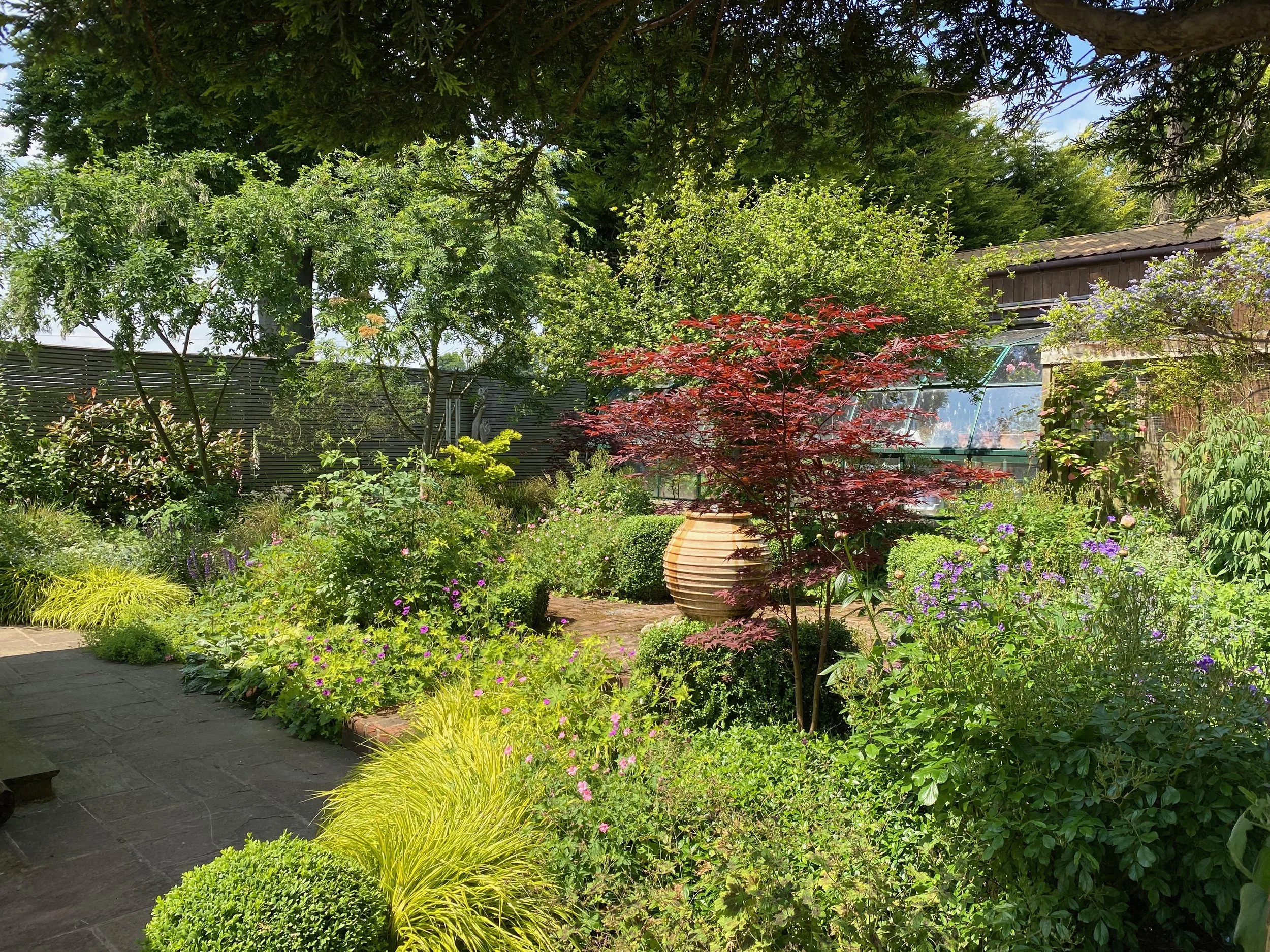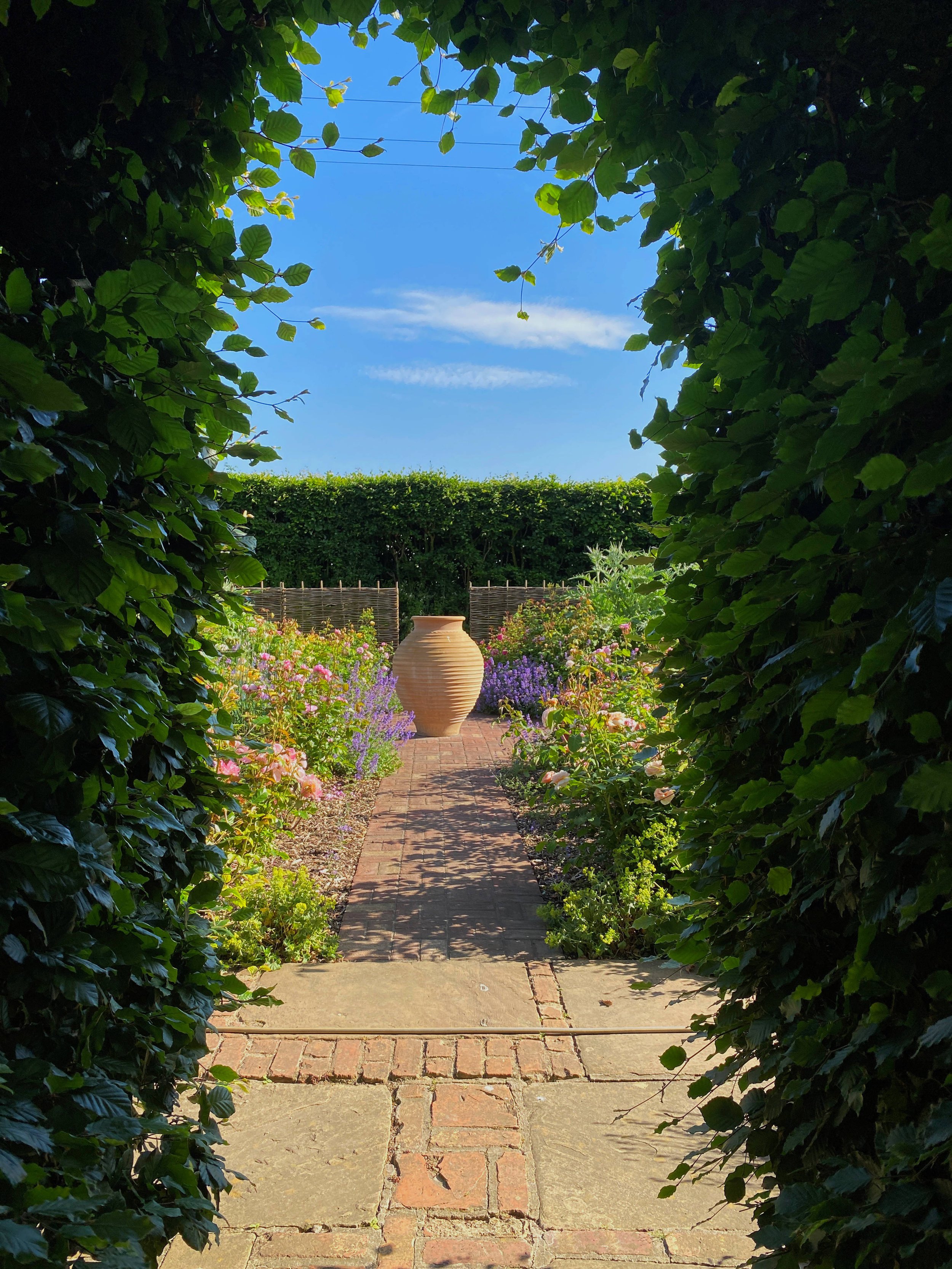The Expert Guide To Country And Traditional Garden Styles
What is distinct about a country garden
A Traditional English Country garden is a garden style that works fantastically well in the right setting - so much so that it is famed throughout the world. However when considering such a style you need to be very clear on the time you have to maintain it yourself (or the money you have for someone else to maintain it for you) . Country gardens can be very maintenance intensive if not designed properly and so you may need to adapt your design to modern needs - through careful planning of planting beds in particular. For the purposes of this guide we have shied away from the term “cottage garden” as traditionally these gardens need so much work staking, deadheading, weeding, and re-working - which means they are not always best suited where your time for gardening in limited.
In a traditional and/or country garden it is the plants that form the basis of the space. These are grown in beds and borders (and sometimes separately in raised beds to generate cuttings and flowers for display inside). That is not to say the hard landscape detailing is not important - but it should be sensitively designed to almost blend into the background so as to not compete with the plants.
Often this country style will include more soft and curving edges to the design - although it is still possible to overlay a strong geometry if this is preferred, and this can work incredibly well closer to the house.
Such gardens may include some or all of a whole variety of features developed over the years. Common to most are such items as topiary, rose arches and arbours, and areas of the garden that are on the edge of going wild…At the larger end of the scale, in rolling country gardens where space isn’t an issue, often areas of detail are closest to the house (with meadows, orchards, and sometimes swimming pools further away) and the space is often divided into different garden rooms - providing variety and intrigue as visitors journey through the different spaces, each with their own character and purpose.
So what does a country/traditional garden look like?
Country gardens in the twenty first century have developed steadily over the last two hundred years (and longer). They owe much to the development of gardens for large houses and stately homes (often looking to tie with established traditions with regards to what the different rooms or areas should look like). In detail however they do owe much to the development of the cottage garden style - as exemplified by Victorian and Edwardian gardeners, and especially Gertrude Jekyll (and the hard landscaping of Edwin Lutyens).
Ms Jekyll stands tall when it comes to the English long border and its development, but other key figures in the country garden style include William Robinson (for his naturalistic plantings) and more recently gardeners such as Christopher Lloyd and Penelope Hobhouse.
Gardens of this style therefore bring an overlay of ‘heritage’ to their construction, but a clever design does not need to be backward looking or overly labour intensive. It should however always feel like a place for relaxing on a warm summer’s day…
A Stylistic Overview: Some Structural Highlights
Traditional features in keeping with the house and its context are essential - stone terraces, wide steps, and planting obelisks and other structures for climbing plants to scramble over for example
A main patio or terrace will be situated by the house - with benches at key points around the garden for you to stop and linger
Larger country gardens may include different and distinct garden rooms of strong character - kitchen gardens, herb gardens, rose gardens, reflective spaces, and places that can be planted to be phenomenal for only a short time each year as they are not always on display (Laburnum arches spring to mind)
Ponds are common - whether they are formal rectangles reflecting the sky or teeming with life and plants
Furniture tends to be a little more formal but you should never compromise on comfort
Garden lighting tends not to be a significant feature - although lighting the terrace, paths, and a few feature trees can make a real difference on a summer’s night
Artisanship and craftsmanship in the creation and selection of different features, from gates to pots, are the key to creating an overall theme of the garden being comfortably set in its place
A Stylistic Overview: Some Planting Highlights
Planting should be in bold drifts for ease of maintenance - although it is good to allow intermingling of the plants over time for serendipitous combinations
Traditionally country borders are planted with taller plants to the rear of the border but these taller plants have been allowed to migrate towards the front in recent years creating a more dynamic feel to a border
Similarly borders have often been planted on the basis of colour theory - either sticking to a limited palette or allowing colours and tones to change gradually over distance; this is no longer followed by all but can create a traditional feel to a planting when needed
Summer colour is the key though - such a garden is to be enjoyed when the sun is out and put to bed over the winter
Plants may include annuals, biennials, perennials, climbers, seasonal bulbs - Campanula, Foeniculum, Phlomis, Salvia, Verbascum, Allium, Aquilegia, Aster, Antirrhinum, Digitalis, Hesperis matronalis, Geranium, Papaver, Tulipa and Narcissus - the list continues ever onwards
Minimal grasses (perhaps just Stipa gigantea) tend to be used but intermingling grasses or adding them in blocks to repeat through the scheme works perfectly well
Shrubs, often evergreen shrubs, are used as a backdrop to seasonal plantings - as well as being used in their own right, especially roses, hydrangeas, and azaleas
Self seeding is encouraged for the plants that can move around the garden without creating a weed problem - scatter liberally seeds such as Digitalis, Hesperis, and Myosotis.





